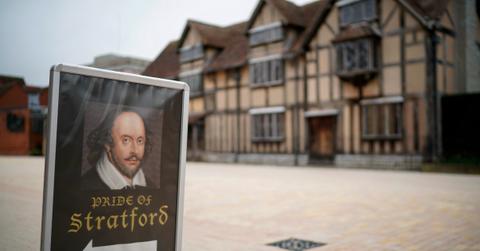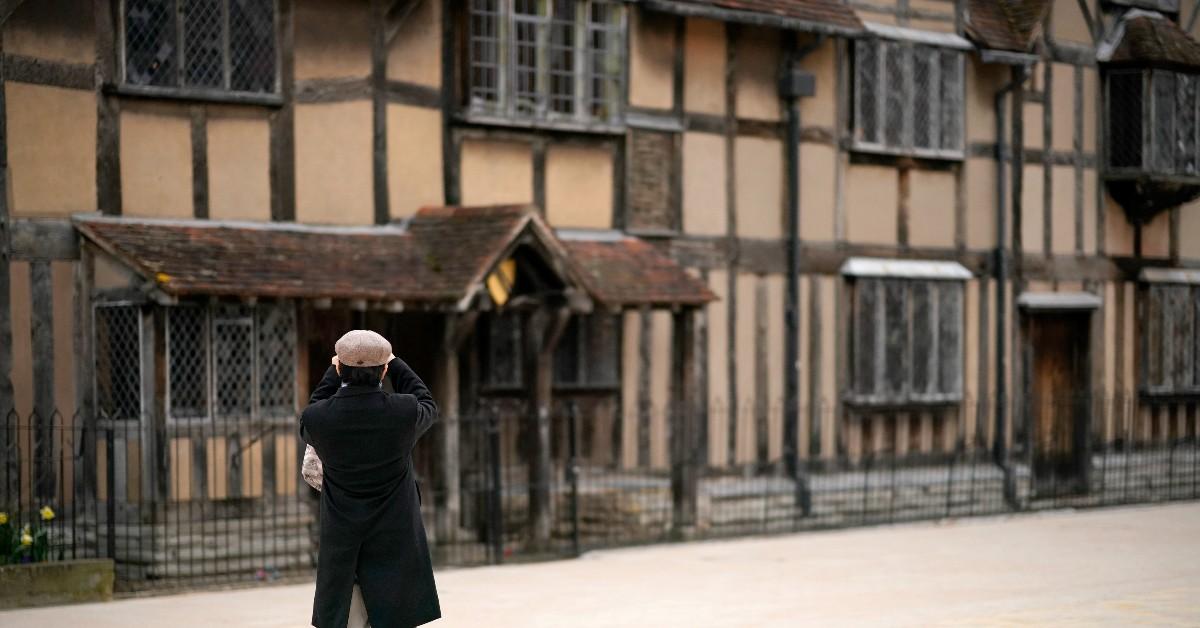What Does an Annoyed, Tax-Avoidant Reverend Have in Common With Shakespeare's House?
Published April 25 2022, 9:25 a.m. ET

On April 23, 1616, England's greatest playwright died. William Shakespeare certainly carved his legacy in every page of his famous plays, but unfortunately, the history of his last home isn't quite so positive.
There's a redesigned site on the land of Shakespeare's final house, aptly named New Place, that tourists can visit if they venture to the serene town of Stratford-upon-Avon. However, the truth of what happened to the original New Place is a tale as dramatic as a scene from one of Shakespeare's plays.

Hell hath no fury like an angry reverend.
Reverend Francis Gastrell purchased New Place in 1753, per the Shakespeare Birthplace Trust. The New Place that Shakespeare had known had actually been renovated before Gastrell came along, and even in the 18th century, it drew fans from far and wide.
During this time, there was a beautiful Mulberry tree on the New Place property. Shakespeare fans believed that the tree had been planted by the bard himself, so naturally it became a huge tourist draw. According to the Shakespeare Birthplace Trust, Gastrell reportedly became so irritated by the constant stream of visitors that he took drastic measures and chopped the tree down.
While Stratford-upon-Avon effectively canceled the reverend after he cut the tree down, things got worse when they learned he'd been avoiding paying his taxes on the property. Once again, the reverend decided to escalate things far too quickly, and instead of paying the taxes he owed, he demolished New Place in 1759.

Shakespeare was born and died in Stratford-upon-Avon.
Gastrell: Exit, stage left, pursued by the angry citizens of Stratford.
Of course, this did not endear Gastrell to his fellow citizens of Stratford-upon-Avon. Per the BBC, Gastrell had to leave town, and leave town fast.
Thankfully, alls well that ends well with New Place. In 1876, the Shakespeare Birthplace Trust acquired the property where the home once stood and has since redesigned the land into beautiful gardens with specially commissioned artwork. Visitors can walk among the flowers in the footsteps of Shakespeare and pay their respects to the bard.
According to No Sweat Shakespeare, "The Birthplace Trust, in its recent renovations, wisely decided that the best way to preserve, or recreate, the spirit of Shakespeare was to keep New Place – a vacant lot where there had once been a succession of houses and a garden – natural: that was the driving principle."
If you're a fan of Shakespeare, a visit to Stratford-upon-Avon is definitely bucket list-worthy. In addition to New Place, tourists can visit Shakespeare's birthplace, his wife Anne Hathaway's cottage, Shakespeare's schoolroom, and even Trinity Church, where the playwright is buried.
New Place as a home may no longer exist, but Shakespeare's legacy can never be torn down. Ben Jonson, a fellow playwright during Shakespeare's time, summed it up perfectly with this tribute to the bard: "Not of an age, but for all time."